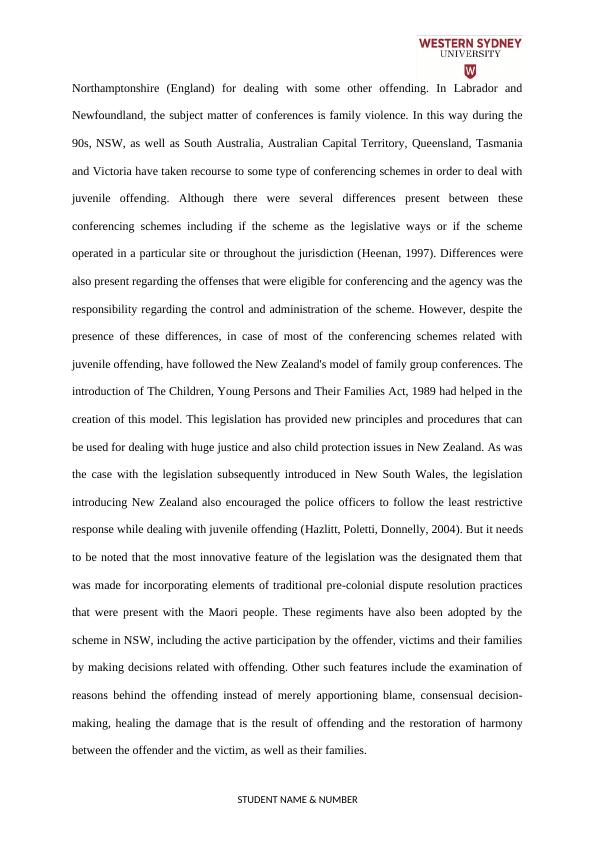Proposed Amendment of Young Offenders Act, 1997 (NSW) for Youth Justice Conferencing in Sexual Offenses
Write a briefing paper advising the NSW Parliament on the possible consequences of a proposed amendment to youth justice legislation in NSW.
7 Pages2012 Words74 Views
Added on 2023-06-12
About This Document
This briefing paper analyzes the proposed amendment of the Young Offenders Act, 1997 (NSW) with a view to introduce the option of youth justice conferencing in case of sexual offenses. The paper provides background information on conferencing schemes and analyzes the research and analysis of the proposed change. The paper recommends that the Young Offenders Act, 1997 (NSW) should be amended, and the option of youth justice conferencing should be produced for the juvenile sex offenses.
Proposed Amendment of Young Offenders Act, 1997 (NSW) for Youth Justice Conferencing in Sexual Offenses
Write a briefing paper advising the NSW Parliament on the possible consequences of a proposed amendment to youth justice legislation in NSW.
Added on 2023-06-12
ShareRelated Documents
End of preview
Want to access all the pages? Upload your documents or become a member.
Restorative Criminal Justice System: Key Issues and Impacts
|4
|944
|366
Youth Justice System in Australia: Framework and Impact on Society
|6
|1528
|398
Critically Assessing Restorative Justice
|13
|4272
|346
Legislation and Regulations
|7
|2875
|430
Restorative Justice Programs in Victoria and New South Wales
|6
|1618
|67
Domestic Violence Legislations in Australia
|11
|1958
|112



